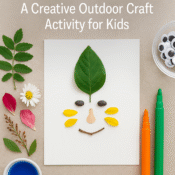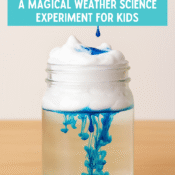
Sound Sculptors: Designing Music from Everyday Objects
Turning Noise into Musical Discovery
Have you ever noticed how a rubber band hums when plucked? Or how a straw can whistle with the right breath? In this third instalment of our “Creative Skills Lab” series, kids become sound sculptors—transforming everyday items into instruments of imagination. These hands-on sound experiments introduce children to acoustics, pitch, and vibration in ways that are playful, accessible, and full of musical possibility.
This is STEAM in its most harmonious form—where science and sound meet invention.
The Science Behind the Sound
Sound is caused by vibrations that travel through air (or another medium) and reach our ears. Pitch is determined by how fast something vibrates: faster = higher pitch, slower = lower pitch. Materials, shape, and tension all influence these vibrations.
By building simple instruments, children can explore how these factors change sound. It’s a hands-on way to understand resonance, frequency, and amplitude—concepts that are otherwise invisible.
Projects That Let Kids Tune In
1. Straw Pan Flute with Variable Pitch
Objective: Make a pan flute from straws that demonstrates pitch differences.
Materials:
- 6–8 plastic or paper straws
- Scissors
- Tape
- Ruler or marker (optional)
Steps:
- Cut each straw to a different length—longer = lower pitch.
- Line up the cut ends and tape the straws side by side.
- Blow across the tops (not into) to produce sound.

What to Observe: Shorter straws vibrate faster, making higher notes. Kids can play scales or familiar tunes.
2. DIY Rubber Band Box Guitar
Objective: Build a string instrument and experiment with tension and pitch.
Materials:
- Empty tissue box or shoebox
- Rubber bands (various sizes)
- Scissors or craft knife (adult help)
- Optional: paper tube for a “neck”
Steps:
- Cut a hole in the box top if not already present.
- Stretch rubber bands around the box over the hole.
- Pluck each band and listen for pitch.
- Optionally insert a cardboard tube to mimic a guitar neck.

What to Observe: Thick bands make lower sounds. Tighter bands vibrate faster. Kids can tune or strum to change pitch. Navigate here to see more recycled material crafts.
Quick Swaps for Impromptu Jams
No full setup? Try these sonic mini-projects:
- Tuning Fork Water Vibration: Strike a tuning fork and dip it into water—watch ripples dance.
- Paper Cup Echo Amplifier: Speak into a paper cup or tube and notice the amplified effect.
These quick builds make great warm-ups for deeper acoustic exploration.
Extend the Learning
To deepen engagement:
- Record different sounds and compare waveforms using free apps
- Create a junk orchestra from recycled materials
- Build a musical scale or compose a DIY tune
Books like “Science Experiments with Sound” or “The Science of Music” can inspire and guide.
For advanced students, introduce concepts like sound insulation, harmonics, or use apps like Chrome Music Lab.
Where Curiosity Meets Rhythm
Sound is more than music—it’s science in motion. These activities empower children to create and explore, turning boxes into guitars and straws into symphonies. Whether you’re nurturing a future musician or just building curiosity, the joy of discovery rings loud and clear.
Thanks for exploring with us in the Creative Skills Lab. Until next time, keep tinkering and keep listening.
Free Downloads
Sound Sculptors Activity Pack (PDF)
Includes:
Quick Cards: Tuning Fork & Echo Cup
Straw Flute Cutting Guide
Box Guitar Assembly Diagram




